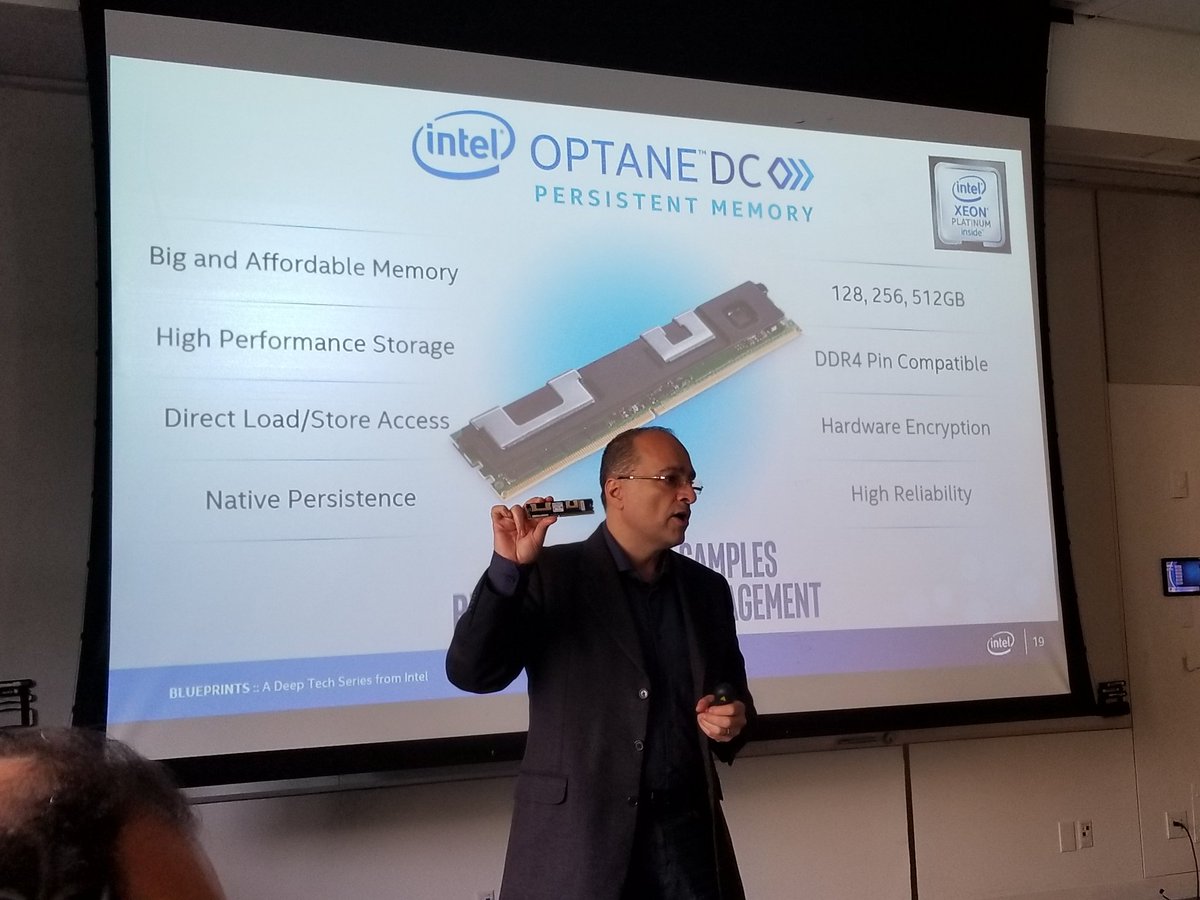Intel Announces Optane DC Persistent Memory Is Sampling Now, With Broad Availability In 2019
Intel took to the stage at its Memory and Storage day to announce the new Intel Optane DC persistent memory. The company said this new persistent memory "represents a new class of memory and storage technology architected specifically for data center usage," with the express purpose of supporting the massive amounts of storage that data centers require with the industry's ever-increasing need for speed.
How's it supposed to accomplish that goal? Well, by offering more capacity than traditional DRAM per module, with the first products being available in three SKUs with 128, 256, and 512GB capacities. That's significantly more than the highest DDR4 stick offers--Crucial previously held that crown with a 128GB capacity product that cost $4,000 per stick. By contrast, Intel Optane DC is supposed to "offer the unprecedented combination of high-capacity, affordability, and persistence," so we're guessing the first products won't run customers upwards of $4,000 a pop.
Here's what Intel's vice president and general manager of Xeon products and data center marketing, Lisa Spelman, said in a press release:
"High-capacity persistent memory in the data center allows applications to run without incurring the latency penalty of going out to storage over the PCIe bus. As developers adapt software, this new memory class is designed to enable cost-effective, large-capacity in-memory database solutions; provide greater system uptime and faster recovery after power cycles; accelerate virtual machine storage; deliver higher performance to multi-node, distributed cloud applications; and offer advanced encryption for persistent data built into the hardware."
We first learned about an Optane DIMM package in 2016 at the Storage Visions conference. The technology didn't arrive in the expected timeframe, which led us to question if endurance would be an issue with 3D XPoint products, and in November 2016 we also heard that power and thermal requirements were also a challenge. Then, in February, Lenovo accidentally revealed more about the DIMMs' launch than intended.
Now we know that Intel's sampling the new Optane DC persistent memory and that the products will ship for revenue to "select customers" at some point this year, with broad availability beginning sometime in 2019. Developers won't have to wait to get their hands on the tech, though, because Intel plans to offer remote access Intel Optane DC persistent memory-equipped systems via the Intel Builders Construction Zone.
Intel's hope is that developers will take quickly to the new persistent memory products. Spelman said in the press release:
Get Tom's Hardware's best news and in-depth reviews, straight to your inbox.
"As technologies like Intel Optane DC persistent memory come to market, systems architects and developers should consider new methods for data access and storage, and uncover opportunities to remove throughput bottlenecks. These new methods could also result in deriving more value from data. The combination of Intel Optane DC persistent memory with our performance-optimized Intel Optane SSDs and next-generation cost-optimized 3D NAND SSDs with Quad-Level Cell (QLC) technology will further deliver storage efficiency to warm data as an alternative to relying on HDDs."

Nathaniel Mott is a freelance news and features writer for Tom's Hardware US, covering breaking news, security, and the silliest aspects of the tech industry.
-
derekullo This sounds like a car lease.Reply
Affordable pricing ... but you are hooked for life buying them whenever you get close to your "mileage limit".
The real question here is is this is a 50,000 mile lease or a 5 million mile lease?
If it costs $1,000 but you have to replace it 4 times in the life cycle of a "regular" 128 Gigabyte $4,000 stick then you are back where you started. -
justinhca The value proposition on the release of the product won't be clear-cut, so I think that's why Intel is targeting a small audience--developers and system architects first. The technology can scale, so the economics should get more compelling approaching 2020.Reply
